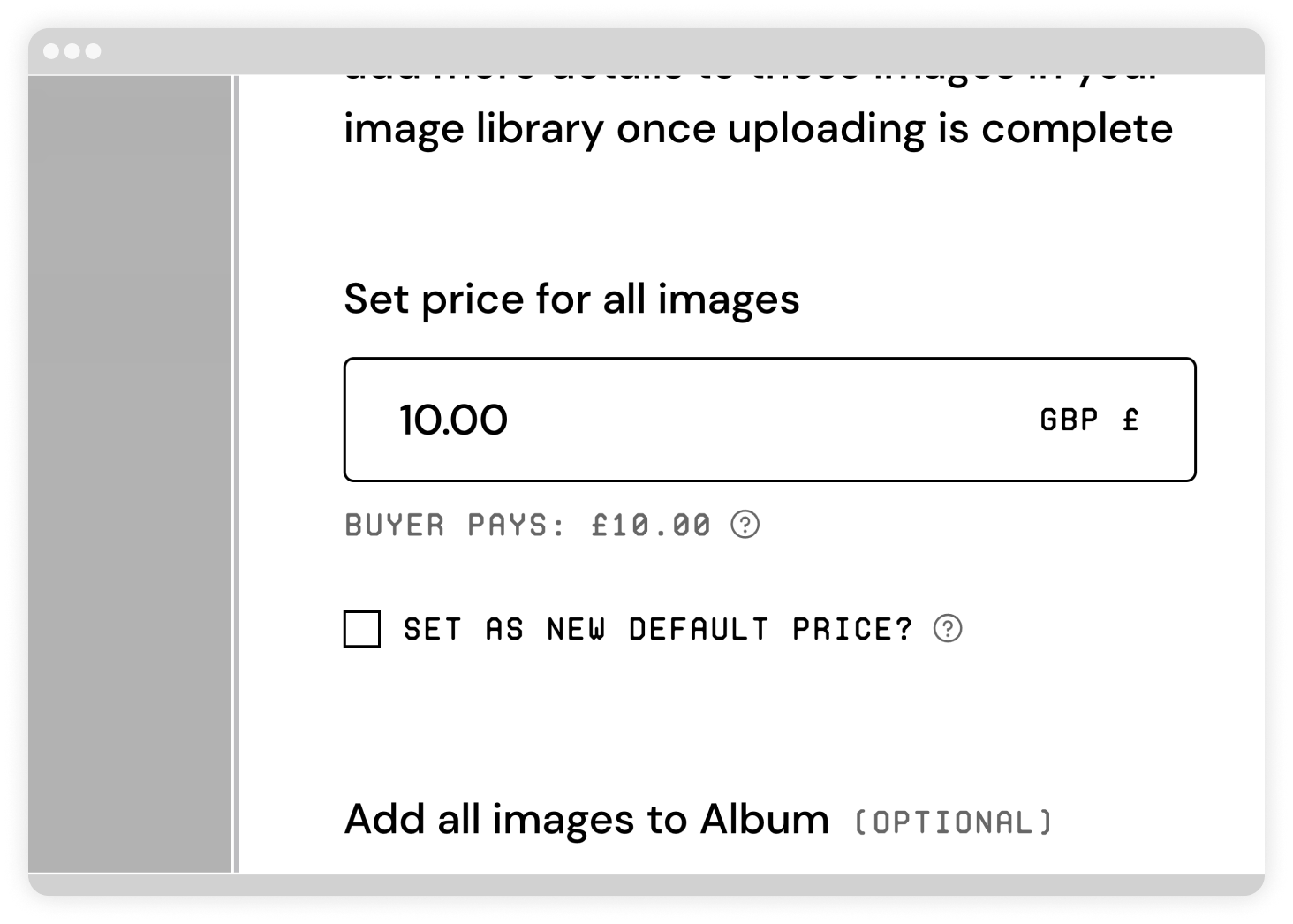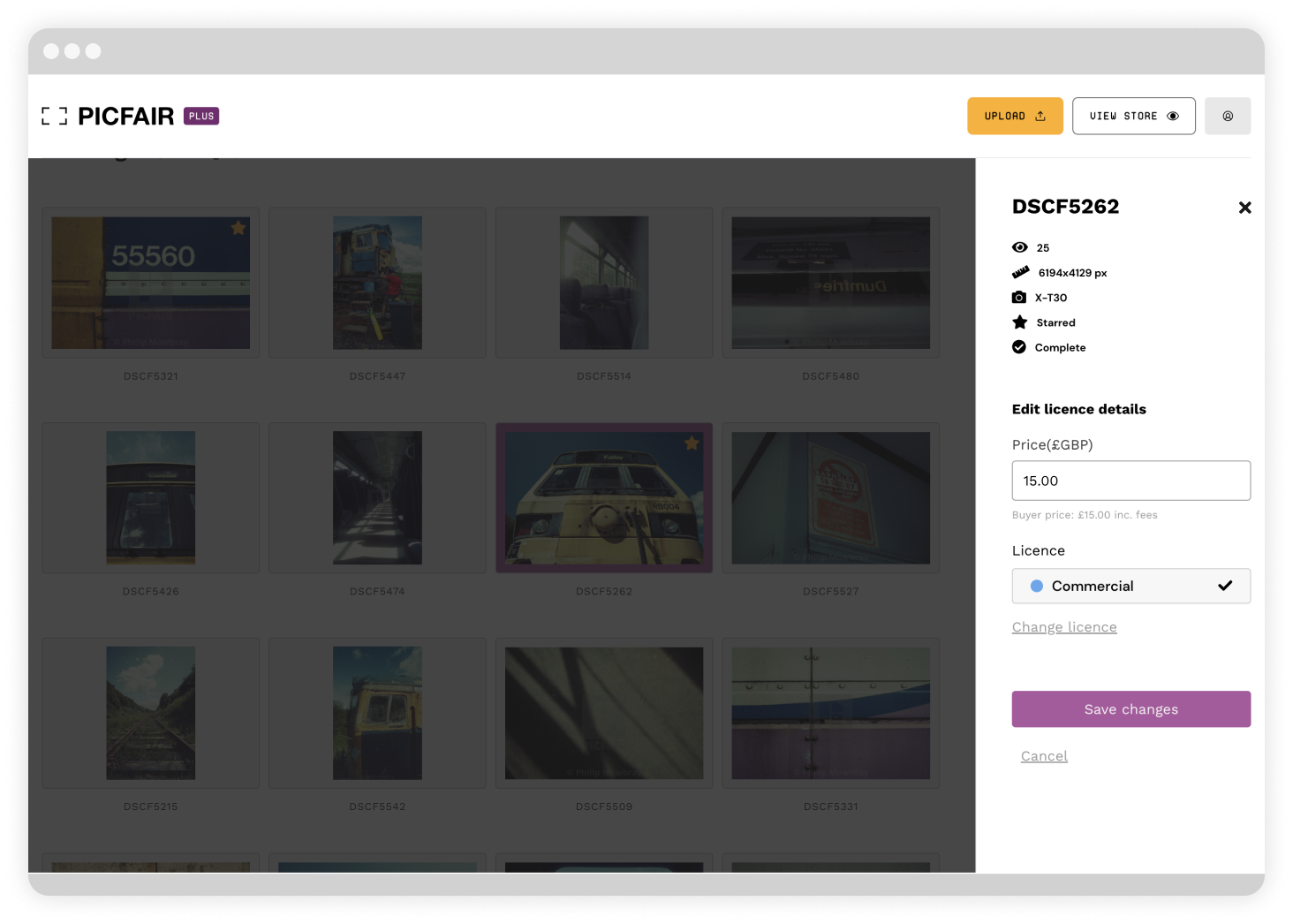Pricing Strategies for Photographers
Effective pricing is crucial for photographers looking to monetize their work on platforms like Picfair. This section explores various strategies to help photographers set competitive and profitable prices for their images.
Also Read This: Unlocking the Vault: How to Get Shutterstock Images for Free
Factors Influencing Photo Pricing

Setting the right price for your photos involves a thoughtful consideration of multiple factors. Understanding and leveraging these elements will not only enhance the value of your work but also attract potential buyers.
1. Quality and Uniqueness
The intrinsic quality and uniqueness of your photos play a pivotal role in determining their market value. Ensure your images stand out by:
- Optimizing Image Resolution: High-resolution images are often perceived as more valuable. Invest time in enhancing the clarity and sharpness of your photographs.
- Adding a Personal Touch: Infuse your unique style or perspective into your work. Originality can significantly increase the appeal of your photos.
2. Licensing Options
Choosing the right licensing model is essential for both you and your clients. Understand the distinctions between:
| Licensing Type | Description |
|---|---|
| Exclusive vs. Non-exclusive Licenses | Determine whether you want to grant exclusive rights to a single buyer or allow multiple buyers to purchase the same image. |
| Rights Managed vs. Royalty-Free | Consider the usage restrictions and payment structure. Rights-managed licenses may have more limitations but offer higher fees. |
3. Market Demand and Trends
Stay informed about current market demands and trends. Regularly research and analyze what types of photos are in demand to adjust your pricing strategy accordingly. Keep in mind seasonal trends and popular themes.
4. Photographer's Reputation
Your reputation as a photographer influences the perceived value of your work. Factors contributing to a positive reputation include:
- Consistent Quality: Delivering high-quality images consistently builds trust with buyers.
- Positive Reviews: Encourage satisfied clients to leave positive reviews, enhancing your credibility in the marketplace.
5. Regional Variances
Consider regional variations in the cost of living and market demand. Prices that work well in one region may not be suitable for another. Research and adjust your pricing based on the geographic location of your target audience.
By carefully weighing these factors, photographers can develop a pricing strategy that reflects the true value of their work while remaining competitive in the market.
Also Read This: How to Choose the Right Video Hosting Platform for Your Business
Setting Competitive Prices

Establishing competitive prices for your photos is a delicate balance between maximizing your earnings and remaining attractive to potential buyers. Consider the following factors when setting prices to ensure a fair and competitive market position.
1. Balancing Profitability and Affordability
Striking the right balance between profitability and affordability is crucial. Avoid overpricing your photos, which may discourage buyers, while ensuring your prices reflect the value of your work and effort. Consider the following sub-points:
- Consideration of Time and Effort: Factor in the time and effort invested in capturing and processing each photo. This helps ensure that your pricing aligns with the level of skill and dedication involved.
- Comparing with Industry Standards: Research industry standards to understand the average pricing for photos of similar quality and licensing terms. Use this information as a benchmark for your own pricing strategy.
2. Packaging and Bundling Options
Offering different pricing packages and bundling options provides flexibility for buyers and increases the likelihood of sales. Consider creating packages based on:
- Image Collections: Bundle related images together to provide buyers with a cost-effective option to purchase multiple photos at once.
- Licensing Tiers: Implement tiered pricing for different licensing options, allowing buyers to choose the level of usage that best fits their needs and budget.
3. Special Promotions and Discounts
Implementing occasional promotions and discounts can stimulate sales and attract new customers. Consider offering:
- Seasonal Discounts: Introduce discounts during holidays or special occasions to encourage increased purchasing activity.
- First-Time Buyer Discounts: Provide incentives for first-time buyers to build a customer base and encourage repeat business.
4. Regularly Reviewing and Adjusting Prices
Market dynamics and trends change over time, and your pricing strategy should evolve accordingly. Regularly review and adjust your prices based on:
- Market Feedback: Pay attention to feedback from buyers and competitors to identify areas for improvement or adjustment.
- Performance Analytics: Utilize platform analytics to assess the performance of your photos and adjust prices based on popularity and demand.
By implementing these strategies, photographers can set competitive prices that appeal to buyers while ensuring their work is appropriately valued in the market.
Also Read This: Removing Getty Images Watermark: An Easy Guide for Removing Watermarks
Utilizing Picfair Features
Maximizing the potential of your photography on Picfair involves not only creating stunning visuals but also strategically utilizing the platform's features. Here's a guide on how photographers can make the most out of Picfair's offerings.
1. Optimizing Your Picfair Profile
Your Picfair profile is the face of your photography business on the platform. Optimize it by:
- Creating an Engaging Bio: Craft a compelling biography that reflects your style, expertise, and passion for photography. A well-written bio can captivate potential buyers and establish a connection.
- Showcasing a Diverse Portfolio: Feature a diverse range of high-quality images in your portfolio to demonstrate the breadth of your skills. This helps attract a broader audience with varied preferences.
2. Understanding Picfair's Pricing Mechanism
Being aware of how Picfair's pricing structure works is essential for setting competitive prices. Familiarize yourself with:
- Comprehending Picfair's Commission Structure: Understand the percentage Picfair takes from each sale. Factor this into your pricing strategy to ensure you are appropriately compensated for your work.
- Taking Advantage of Promotional Tools: Explore and utilize any promotional tools or features provided by Picfair. These may include options for highlighting certain images or participating in themed promotions to increase visibility.
3. Leveraging Picfair's Community
Engaging with Picfair's community can enhance your visibility and networking opportunities. Consider:
- Participating in Community Events: Join discussions, contests, or other community events hosted by Picfair. This not only increases your exposure but also connects you with potential buyers and fellow photographers.
- Collaborating with Other Photographers: Explore collaboration opportunities with other photographers on Picfair. This can lead to joint promotions or shared audiences, expanding your reach.
4. Regularly Updating Your Portfolio
Keep your portfolio fresh and up-to-date to maintain audience interest. Consider:
- Adding New and Relevant Content: Regularly upload new photos that align with current trends and buyer preferences.
- Retiring Outdated Images: Periodically review and remove outdated or less popular images to keep your portfolio curated and focused on your best work.
By incorporating these strategies, photographers can effectively utilize Picfair's features to build a strong presence, attract buyers, and optimize their earning potential on the platform.
Earnings from Adobe Stock: What to Expect Adobe Stock, Earnings, expectations, financial insights, income, Stock photography https://t.co/tXXasKaDrA
— IMGPANDA (@Imgpanda008) November 22, 2023
Also Read This: How to Crack Freepik Premium: Is It Possible?
Addressing Common Concerns (FAQ)
Photographers often encounter common concerns when pricing their photos on Picfair. Here, we address frequently asked questions to provide clarity and guidance on navigating the pricing landscape.
Q: How do I decide between exclusive and non-exclusive licenses?
A: The decision between exclusive and non-exclusive licenses depends on your business strategy. Offering exclusive licenses to a single buyer may command higher prices, but it restricts your ability to sell the same image to multiple clients. Non-exclusive licenses allow broader distribution but at potentially lower individual prices. Consider your target market and the uniqueness of your images when making this decision.
Q: What factors should I consider when determining image pricing?
A: Several factors influence image pricing. Consider the quality and uniqueness of your photos, licensing options, market demand, and your reputation as a photographer. Balancing profitability with affordability, staying informed about industry standards, and adjusting prices based on regional variances are key elements in determining the optimal price for your photos on Picfair.
Q: Can I change the pricing of my photos on Picfair?
A: Yes, Picfair provides flexibility for photographers to adjust their pricing. Regularly review your pricing based on market feedback, performance analytics, and changes in industry trends. You can experiment with different pricing strategies, introduce promotions, and make adjustments to stay competitive and responsive to market dynamics. Keep in mind that a dynamic pricing approach can help optimize your sales and overall earnings on the platform.
Conclusion
Summing Up Best Practices As photographers, the art of pricing your photos on Picfair is a dynamic process that requires a thoughtful approach. By understanding the key factors influencing photo pricing, implementing competitive pricing strategies, and leveraging Picfair's features effectively, you can optimize your earning potential on the platform.
Remember to balance profitability with affordability, stay attuned to market trends, and regularly review and adjust your pricing strategy. Utilize Picfair's tools to enhance your profile, engage with the community, and stay competitive in the dynamic marketplace.
In addressing common concerns through FAQs, we've aimed to provide clarity on important decisions, such as choosing between exclusive and non-exclusive licenses, determining image pricing factors, and managing the flexibility of adjusting prices on Picfair.
In conclusion, pricing your photos on Picfair is both an art and a science. It requires ongoing experimentation, adaptation to market dynamics, and a commitment to delivering quality content. By following the best practices outlined in this guide, you can navigate the world of photo pricing on Picfair with confidence and maximize your success as a photographer on the platform.









































